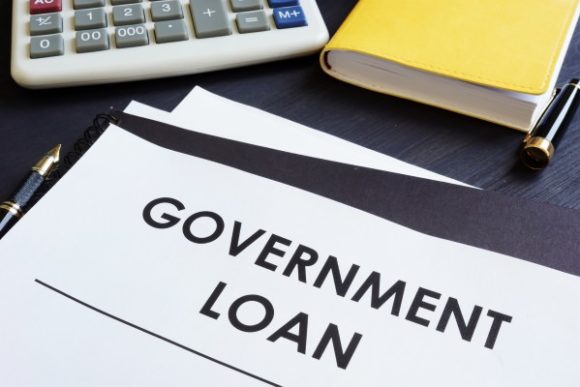One of the main reasons veterans and service members choose VA loans to purchase a home is because of the zero down payment requirement.
Did you know VA loans aren’t the only loan program providing 100% financing? If you live in a rural area and qualify as a low- to moderate-income household, you may be eligible for a USDA loan.
What’s more, the USDA has a very generous definition of what constitutes “rural.” In most cases, that extends to suburban locations.
Chances are, you live in a USDA-approved county.
If you have a choice between the VA loan and the USDA loan, which should you choose?
Both are excellent home financing options. In this guide, we’ll discuss the key differences between USDA and VA loans and cover the benefits and potential drawbacks of each loan type.
Table of Contents
- VA Loans vs. USDA Loans: Similarities and Differences
- VA Loans vs. USDA Loans: How Much Can I Borrow?
- Interest Rates and Loan Fees
- Down Payment Requirements
- Loan Program Eligibility
- Credit Requirements
- Income Qualifications
- Mortgage Insurance Requirements
- Renovation and Rehab Loans
- Which is Better – VA Loan vs. USDA Loan
VA Loans vs. USDA Loans: Similarities and Differences

U.S. government agencies sponsor both VA loans and USDA loans. In the case of VA loans, that’s the Department of Veterans Affairs.
As the name implies, USDA loans are sponsored by the United States Department of Agriculture.
In the case of both USDA and VA loans, financing is granted through private lenders. However, either the VA or the USDA provides a guarantee for the lenders in the event the borrower defaults.
USDA and VA loans are often compared because of their benefits. While both can make homeownership more accessible, the two loan types differ in a few key ways.
USDA loans are restricted to single-family homes, as properties are not permitted to produce income. You can purchase up to a four-unit property with a VA loan.
Acceptable use of funds for USDA loans include building, repairs, renovation and home relocation or the purchase and preparation of home sites, including water and sewage setup. (These are property-related activities that would not be uncommon in a rural location.)
Neither program makes financing available for either vacation homes or investment properties.
Here’s a quick overview of the key similarities and differences between USDA and VA loans:
| USDA Loans | VA Loans |
| General public is eligible | Only available to active-duty service members and veterans |
| Income limits | No income limits |
| No loan limits | Loan limits* |
| Credit score of 640; varies by lender | Credit score of 620; varies by lender |
| Eligibility based on location | Almost no location restrictions |
VA Loans vs. USDA Loans: How Much Can I Borrow?
Maximum VA Loan Amounts
As of 2023, the maximum VA loan total is $726,200 in most locations for service members and veterans hoping to take out a second VA mortgage without a down payment. However, that number can be increased to $1,089,300 in places determined to be high-cost housing markets.
Loan amounts are decided at the county level, so you’ll need to check the loan limits for any county you suspect to be in a high-cost area.
The maximum loan amounts are higher for two-to-four unit properties, and are as follows:
- Two units: $929,850 (up to $1,394,775)
- Three units: $1,123,900 (up to $1,685,850)
- Four units: $1,396,800 (up to $2,095,200)
Jumbo VA Loans
Rules for service members and veterans seeking jumbo loans or for those living in higher-cost markets are no longer subject to federal VA loan limits. This rule change, which took effect Jan. 1, 2020, allows veterans to receive a loan in all areas of the country without a down payment, regardless of the price of the home. Loan limits still apply for veterans and service members with more than one active VA loan, partial entitlement ora default on a previous loan.
It’s possible to use a VA loan to purchase a high-priced property, even if the loan amount necessary exceeds the published VA loan limits listed above. That ability comes with requirements.
If you do not have your full entitlement, you’ll need to provide a down payment that’s 25% of the amount by which the loan exceeds maximum limits.
If you were to buy a single-family home at $826,200, your down payment should be $25,000. This reflects 25% of $100,000, the portion of the purchase price over the general VA loan maximum of $726,200
This eliminates the 100% financing benefit VA loans are so well-known for.
But it does give eligible veterans and active-duty military personnel the ability to purchase higher-priced properties with lower down payments than would be the case with conventional mortgages.
USDA Loan Amounts
USDA loans have no maximum loan amount. The USDA bases loan limits on each individual borrower’s financial situation and qualifications.
Interest Rates and Loan Fees
Interest rates and fees on VA loans are similar to conventional and FHA loans. Loans can be either fixed-rate or adjustable-rate and can range in terms from 15-30 years.
Interest rates vary based on market factors. Closing costs generally range between 2% and 5% of the purchase price of the property.
With VA loans, the borrower, seller or lender must pay the closing costs. Often, VA borrowers can negotiate with the seller to cover at least some of the closing costs.
According to the USDA, interest rates on USDA loans are structured as follows:
- As of March 1, 2022, the current interest rate for single family housing direct home loans is 2.50% for low-income and very low-income borrowers.
- Individual lenders set interest rates, but an excellent credit score and low debt-to-income ratio can contribute to getting the lowest rate possible.
- Interest rates with payment assistance can be as low as 1%.
- A 38-year payback period is an option for very low-income applicants who can’t afford the 33-year loan term.
Closing costs can range between 2% and 5% of the purchase price of the property. With USDA loans, borrowers can include their closing costs in the loan amount.
This will result in a loan amount greater than 100% of the purchase price of the property. However, sellers can pay up to 6% of the purchase price in closing costs for buyers, avoiding the need to add those costs to the loan amount.
Down Payment Requirements
Generally speaking, the biggest single benefit of VA loans is 100% financing. That means a service member or veteran can purchase a home with no down payment.
That’s an advantage for active-duty military personnel or those recently discharged, who may not have time to accumulate a down payment.
USDA loans come with the same benefit. Once again, 100% financing means no down payment requirement.
And as discussed above, a USDA loan is the only mortgage type that permits you to add your closing costs to the loan amount.
Loan Program Eligibility
VA loans are available to any eligible veteran or active-duty military personnel. Loans are available across the U.S., and there are no income restrictions.
USDA loans, however, have the following specific requirements:
- You must qualify as a low- or moderate-income household based on income limits in your county of residence.
- You must occupy the subject property as a primary residence.
- As described earlier, the property must be located in an eligible county.
- The borrower must be a U.S. citizen, a noncitizen national or a qualified alien.
USDA Loan Property Eligibility
Similar to the VA loan, the USDA restricts certain property types from loan eligibility. Eligible properties include:
- Pre-existing homes
- New construction
- Manufactured or modular homes
- Condos and townhouses
- Foreclosed homes
A home cannot be used to produce income, so farms, vacation properties and rental homes would not be approved. Homes need to be considered modest for the area in which they are located and cannot have in-ground pools.
Credit Requirements
There are significant differences between the two programs where credit is concerned.
VA loans have no VA-imposed credit score requirement. The VA requires only that the borrower has clean credit for the past year, especially with regards to a mortgage.
However, lenders are free to impose their credit score minimums and typically do. Most will require a minimum credit score of 620, though specific credit requirements vary by lender.
A foreclosure or Chapter 7 bankruptcy requires a minimum of two years from the date of discharge before you can apply for a VA loan, but it extends to three years if the foreclosure involves a VA loan. You must wait at least 36 months after a bankruptcy or foreclosure to apply for a USDA loan.
In contrast to the VA loan, USDA loans have stricter credit requirements.
USDA lenders generally look for a credit score of 640 or better. However, there is no minimum required score for USDA loans, so it is possible to get approved with a score below 640.
Income Qualifications
When it comes to income, USDA and VA loans differ. The USDA loan is unique because it specifically provides the opportunity of homeownership to rural, generally low-income areas.
VA Loan Income Qualifications
First, VA loans have no maximum income limit. The more you earn, the better.
Your income qualification is based on your debt-to-income ratio or DTI.
It’s a ratio in which you divide your stable monthly income by your recurring monthly obligations, including the new house payment.
The DTI limit for VA loans is generally 41%, but lenders will frequently exceed it, going as high as 50%.
VA loans include a secondary income qualifier, referred to as residual income. This is determined by your income, your new house payment, recurring monthly payments, income taxes, utilities and your household family size.
A favorable residual income is an offsetting factor that may convince a lender to exceed the 41% DTI limit.
USDA Loan Income Qualifications
Unlike VA loans, USDA loans do impose a maximum income limit borrowers cannot exceed. This is 115% of the median income in your area.
Depending on your county of residence, the limit for a household with one to four members is as high as $91,900, and $121,300 for households with more than five members. USDA income limits may be even more generous in some areas with higher costs of living.
Unlike VA loans, USDA loans use two DTI calculations. The first is for your proposed housing payment.
Including mortgage principal and interest, real estate taxes, homeowner’s insurance, mortgage insurance and any homeowner’s association fees due, it’s generally limited to 29% of your stable monthly income.
But your total DTI – which is your new house payment, plus recurring debts like auto loans and credit cards – is limited to 41%.
This is the same as the DTI for VA loans. Just as is the case with VA loans, the acceptable DTI on USDA loans can exceed the guidelines with strong compensating factors.
Mortgage Insurance Requirements
VA Mortgage Insurance
This is referred to as the VA funding fee. It’s an upfront charge added to the loan amount. There is no monthly mortgage insurance premium on VA loans.
The fee amount varies based on what type of loan it is and the kind of veteran.
USDA Loan Mortgage Insurance
Like VA loans, an upfront mortgage insurance premium is added to your USDA loan amount. The fee is 1% of your base loan amount.
There is also an annual premium of 0.35% of your loan amount.
For example, if your base loan amount is $200,000, the annual premium will be $700.
Renovation and Rehab Loans
Both VA loans and USDA loans offer renovation and repair capabilities.
VA Rehab Loans
The VA has a specific mortgage program for making renovations and repairs to a home. These mortgages can be used for either purchases or refinances.
For example, you can purchase a property that’s in substandard conditions, and a VA rehab loan will provide funds for both the property purchase and renovation.
Under the program, your loan amount will be the lower of either the as-completed value of the property – which is its market value upon completion – and the purchase price and the actual cost of the renovations. (The latter is referred to as the “acquisition cost.”)
A home’s acquisition cost equates to the purchase price, along with an estimate of renovation costs, plus a contingency for up to 15% of the renovation costs and permit, inspection and title update costs.
You can borrow 100% of the lower of the as-completed value or the acquisition cost. You can also take out a VA rehab loan to refinance your current home.
USDA Housing Repair Loans and Grants
Like the VA, the USDA provides loans to repair, renovate or upgrade your home. As is the case with USDA loans generally, they’re intended for low- to moderate-income borrowers.
You can receive a loan of up to $20,000, and you may also qualify for grants of up to $7,500.
If you qualify for the grant, you can add it to your loan amount, giving you a total of $27,500. Renovations and repairs can include installing energy-efficient upgrades, removing safety and health hazards for very low-income elderly homeowners, and many other improvements.
However, there are stiff eligibility requirements for the program, including a minimum age of 62.
In addition, you must earn less than 50% of the median income in your county of residence. You must also be unable to qualify for a loan from an alternative source.
Which is Better – VA Loan vs. USDA Loan
The primary advantage of VA loans and USDA loans is that both offer 100% financing. That can enable you to purchase a home and even make improvements to it with no upfront cash outlay.
If you’re an eligible service member or veteran, a VA loan will generally be the better option, since it provides more generous loan amounts and imposes no income restrictions.
But if you qualify as low- to moderate-income and can’t qualify for a VA loan based on income requirements, a USDA loan is the way to go.
USDA loans give eligible veterans and service members an additional zero down payment option to purchase a home.
They have relatively limited use, given the income and location restrictions. But if you qualify, they may prove to be an even better choice than a VA loan.

Equal Housing Opportunity. The Department of Veterans Affairs affirmatively administers the VA Home Loan Program by assuring that all Veterans are given an equal opportunity to buy homes with VA assistance. Federal law requires all VA Home Loan Program participants – builders, brokers, and lenders offering housing for sale with VA financing – must comply with Fair Housing Laws and may not discriminate based on the race, color, religion, sex, handicap, familial status, or national origin of the Veteran.




Comments:
About the comments on this site:
These responses are not provided or commissioned by the bank advertiser. Responses have not been reviewed, approved or otherwise endorsed by the bank advertiser. It is not the bank advertiser’s responsibility to ensure all posts and/or questions are answered.
Young feather says
It seems you are confusing usda direct and usda Guaranteed. They are two different loan options and you have a mix of information from both programs. Usda Direct is for 80% median income or less. Usda Guaranteed is for 115% medium income or less.